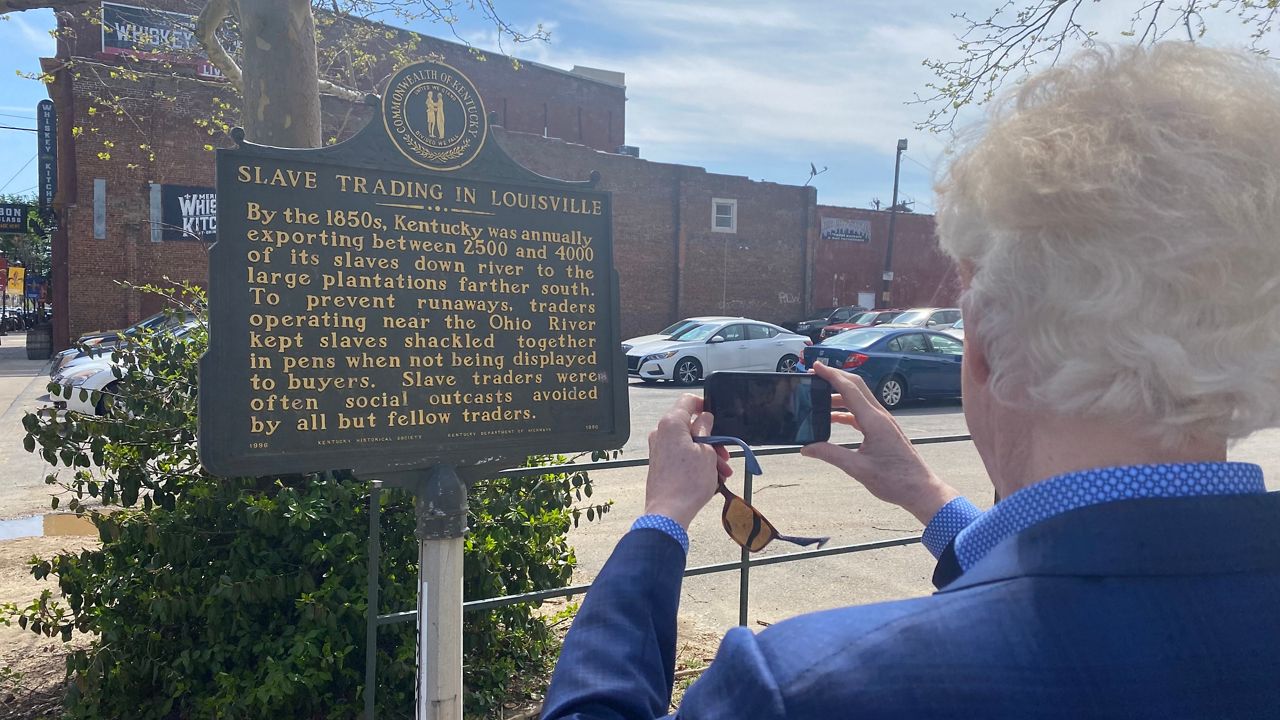LOUISVILLE — A public art project recognized nationally and internationally that began in Lexington has officially expanded into Louisville.
What You Need To Know
- "I Was Here" project began in 2016
- It has won multiple awards
- The Louisville project offers augmented reality experiences
- Muhammad Ali Center, Roots 101 Museum also partners
The “I Was Here” project began in Lexington in 2016 with a set of emblematic Ancestor Spirit Portraits created by photographing contemporary Blacks as archetypal ancestor spirits. The portraits embody family and form cohesive, ethereal images that convey the dignity of the Black individual and family. Lexington is home to Cheapside, once the largest auction site of enslaved Africans west of the Allegheny Mountains.
Now, Louisville Downtown Partnership and the office of Metro Council District 4 are sponsoring the first phase of the “I Was Here” project — an augmented reality (AR) experience to engage downtown visitors interested in learning about Black Americans historical significance in the city’s business district. Roots 101 Museum and the Muhammad Ali Center are partner sites for the project.
According to its description, the project “allows visitors to witness an invisible history, examining who we are to each other, who we are as a nation and, most importantly, how we can work to repair the wounds created by enslavement.”
Ancestor Spirit Portraits like those on display around Lexington have been installed in the Muhammad Ali Center in addition to five AR sites: the Muhammad Ali Center’s Main Lobby, Roots 101 Museum, Arterburn Brothers Slave Pen historic marker on 1st Street just south of Market Street, Garrison Slave Pen historic marker at the southeast corner of 2nd and Main streets and the building opposite the Garrison Slave Pen historic marker at 122 W. Main Street.
An app provides the AR experience available on iOS and Android platforms.
“While Black History Month is a critically important component of our cultural learning, Black History is American history and should be acknowledged every month,” said Rebecca Fleischaker, executive director of Louisville Downtown Partnership. “By infusing technology with public art and public history, this installation project recognizes the wounds and history, providing a unique forum for education, discussion and healing.”
The project has been awarded grants and honors from the American Association for State and Local History, National Endowment for the Arts, CODAworx, Kentucky Humanities and the Blue Grass Trust for Historic Preservation, among many others.
“Black Americans are on every page of our nation’s history, but in most cases, we’re written in invisible ink,” said Jecorey Arthur, District 4 Metro Councilman. “Our city, commonwealth, and country were built with our blood, sweat, and tears. This project will honor those contributions while offering hope to everyone continuing the fight.”
Marilyn Jackson, president and CEO of the Muhammad Ali Center, said the project adds a dimension to learning about Black History.
“The AR experience provides an immersive and sensory snapshot of the past that you experience in the present,” she said. “At the entrance of the Ali Center storefront, visitors will witness an ancestor spirit angel rising from the water to the soundscape of a motherless child. The emotional impact is something that cannot be replicated by reading textbooks. We are proud to be a part of the ‘I Was Here’ project.”
Roots 101 founder and owner Lamont Collins said “I Was Here” is a step toward an accurate account of history.
“We were bulldozers before bulldozers, jackhammers before jackhammers and engineers before engineering degrees,” Collins said. “We built the place we call America.”
A second phase of the “I Was Here” project in Louisville depends on future funding and is under development.



